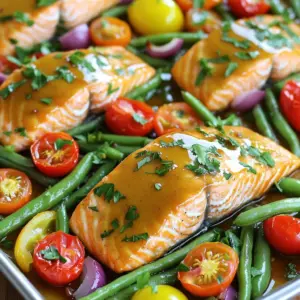
Sheet Pan Maple Dijon Salmon & Veggies
Discover the delicious Sheet Pan Maple Dijon Salmon & Veggies recipe that simplifies dinner time with incredible flavor! This easy dish features tender salmon fillets drizzled with a sweet and tangy maple Dijon glaze, complemented by vibrant roasted veggies like green beans and cherry tomatoes. Perfect for busy weeknights, it’s a nutritious meal ready in just 25 minutes. Click to explore the full recipe and elevate your dinner game today!